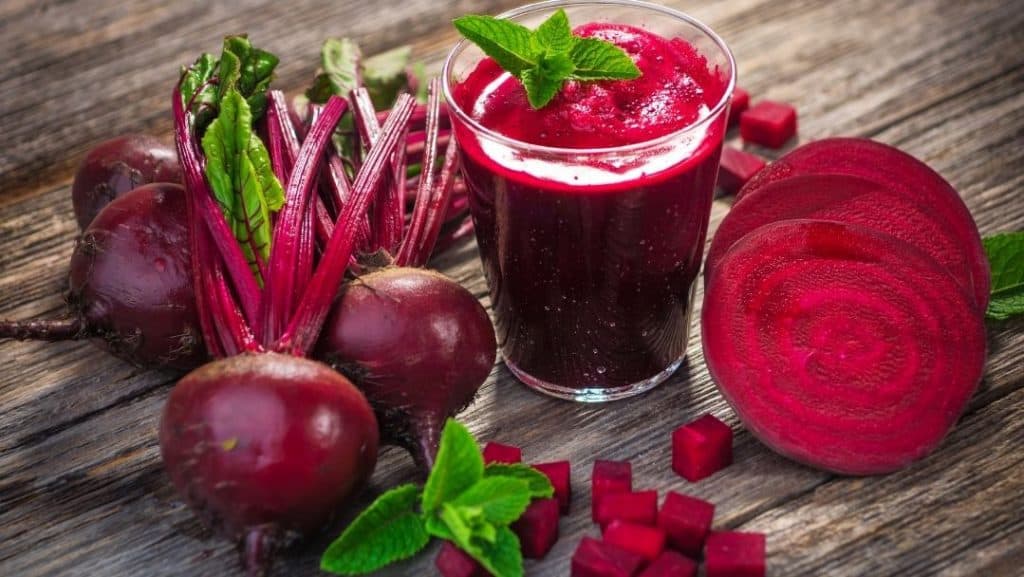Do you know that the number of people interested in health and nutrition has increased by more than 70% over the last ten years? With this trend, it’s no wonder why so many individuals have turned to beet juice as an easy way to get some additional nutrients into their diet.
But if you’re new to making your beet juice from scratch, getting started can be a bit intimidating.
That is why we have put together this step-by-step guide on how to make beet juice at home! Whether you want a simple recipe or something fancier, this guide will give you all the information you need for success. Keep reading to learn how to make beet juice using a juicer or blender.
Health Benefits of Beetroot Juice
Beetroot juice is a natural detoxifier that can aid in maintaining liver health. The presence of “betaine” in the juice helps prevent excess fat buildup in the liver.
It is a good source of essential vitamins and minerals such as calcium, iron, magnesium, zinc, selenium, folate, potassium, and vitamin C. Vitamin C, in particular, is a powerful antioxidant that helps boost the immune system, has anti-inflammatory properties, and promotes wound healing. It also contributes to improving skin health.
During cold/flu season, consuming vitamin C and zinc can boost the immune system. Drinking beet juice can also help lower blood pressure due to the presence of nitrates that relax blood vessels and improve blood flow, thus promoting heart health.
The nitrates in beets also increase exercise stamina and physical performance. Betalains, the compounds responsible for beet’s color, are potent antioxidants with anti-cancer properties.
My article on the health benefits of beetroot juice explains this further.
Does Beetroot Need To Be Cooked Before Juicing?
Beetroot can be juiced raw; it does not need cooking. Raw beets are more nutritious than cooked ones.
Like other vegetables, when beets are cooked, they lose some essential benefits for the body. Vitamin C in beets is water soluble. Therefore, if you boil beets, the carried Vitamin C in them is reduced.
Also, raw beets contain more dietary nitrates than cooked ones. It is better to juice them uncooked to get the most nutrients possible.
Just make sure you use clean and fresh beets for your drink.
How to Make Beetroot Juice with a Juicer
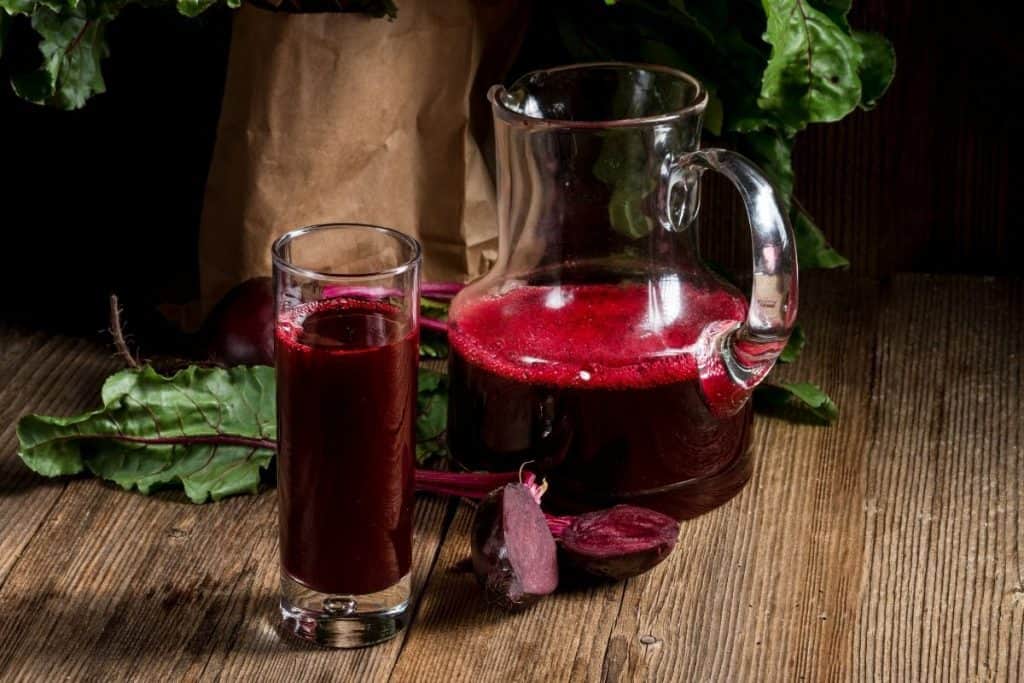
A masticating juicer is the best choice for maximum nutrient extraction. To make one serving of pure beetroot juice, you need four small-sized beets (or two large ones).
If you want to, you can add water to reduce the strength. This is entirely optional. I prefer to add other fruits and vegetables (see further down this post for recipe ideas).
- Trim the green ends and wash the beets thoroughly with running water. If the beet skin is too dirty, you may peel it off.
- Cut the beetroots into small pieces to fit in your juicer chute.
- Feed the chunks individually through the chute and turn the juicer on. Push each to the machine and wait until the piece passes through the juicer before feeding the next.
- Pour the juice into a glass. It is best to drink your homemade beet juice immediately, or you may also chill it first before enjoying it.
Beetroot is also delicious combined with other fruits and vegetables into juice. There are two beet juice recipes further down this page, or browse our other juicing recipes.
How to Make Beet Juice in a Blender
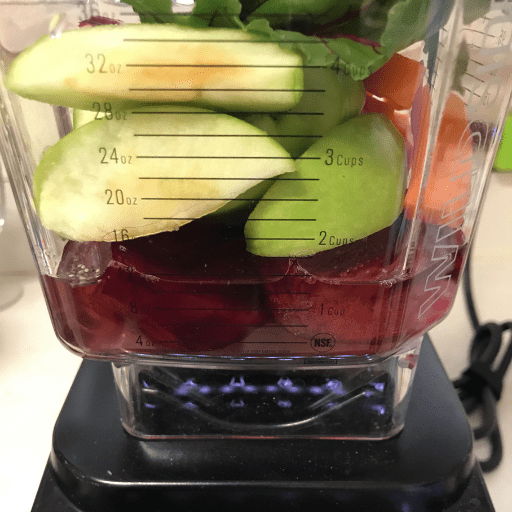
You can make beetroot juice without a juicer using a high-powered blender. Here is a step-by-step guide on how to make beetroot juice with a blender:
1. Start by washing the beets thoroughly in cold water.
2. Peel them and cut them into small cubes before adding them to the blender.
3. Pour in some cold water or freshly squeezed lemon juice for extra flavor (optional).
4. Blend until you reach a smooth consistency.
5. For a thin, smooth texture, you must strain the juice through a fine mesh strainer, nut milk bag, or cheesecloth.
Making delicious homemade beetroot juice has never been easier! All it takes is just a few simple steps, and you have an incredibly nutritious beverage packed full of essential minerals like iron, potassium, magnesium, fiber, vitamin C, and folate – not to mention its fantastic taste! So go ahead and give it a try – your body will thank you later!
What Can I Mix With Beet Juice To Make It Taste Better?
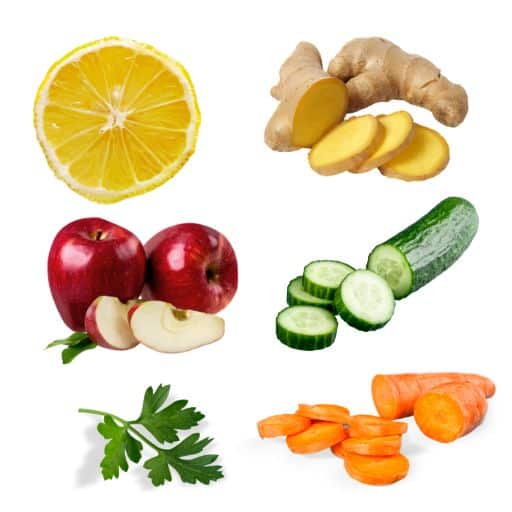
Raw beets have a sweet, earthy flavor that not everyone will enjoy. To balance the earthiness of the beets, try adding other fruits and veggies, such as:
- lemon and ginger – add some tartness and zing to your juice
- cucumber – sweet with a high water content, cucumbers will help dilute the flavor of homemade beetroot juice
- carrots – inexpensive, sweet, and a popular addition in many beet juice recipes
- apples – any apples work well to complement fresh beet juice
Experiment with different combinations of these ingredients for the best results until you find what works. With just a few simple tweaks to the recipe, you can create a flavorful beverage packed with vitamins and minerals!
How To Make A Beet Juice Smoothie
Making a beet juice smoothie is easier than you might think! Here’s how to do it:
- Gather your ingredients. You’ll need beets, some liquid (like water or almond milk), and other fruits/veggies you’d like for flavor and nutrition.
- Wash the beets thoroughly before chopping them into small pieces. If using frozen beets, thaw them out a little first.
- Blend all of the ingredients until smooth.
Now that your smoothie is ready to drink, why not add a few extra ingredients for an even more delicious treat? Some great additions include nut butter, chia seeds, protein powders, oats, and honey. Just make sure to adjust the amount of liquid accordingly to avoid overdoing it with sweetness.
Is It Better To Drink Beet Juice Raw Or Cooked?
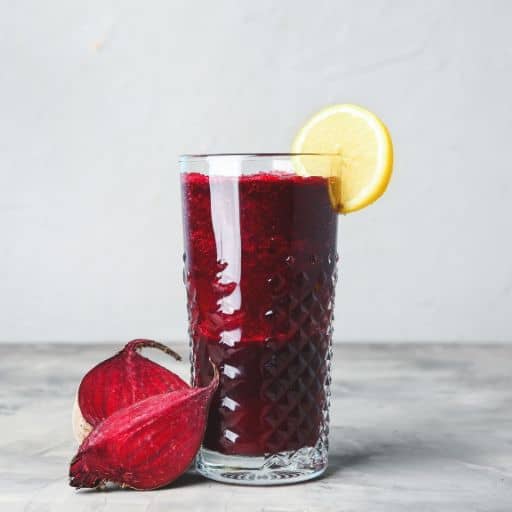
When it comes to drinking beet juice, people often wonder if it is better to consume raw or cooked. I’m a huge advocate for using raw beetroot for maximum nutrients. Here are some points to consider before making a decision:
- Raw Beet Juice – Consuming raw beet juice can give you more nutrients. However, mix it with other juices for palatability because of its strong flavor.
- Cooked Beet Juice – Cooking the juice will reduce its nutrient content somewhat; however, this technique also helps bring out sweetness while reducing the intense earthy flavor. This makes it easier to drink by itself.
- Nutrient Retention – If you choose to cook your beet juice, try not to do so at temperatures higher than 150°F/66°C as this could cause excessive loss of vitamins and minerals.
- Blending vs Juicing – If you’re having trouble deciding between juicing or blending beets, juicing will maximize the nutrients. Blending is the best way to preserve all the fiber. Alternatively, you can strain the juice from the pulp.
- Flavoring – Adding some lemon or lime juice and sweeteners like honey or agave nectar can make the earthy beetroot juices much more enjoyable.
Think about the reasons why you are choosing to juice beets. Do you want improved athletic performance? Choose to make fresh juice from raw beets.
Can Beet Juice Be Frozen?
Beet juice can quickly be frozen in ice cube trays or other containers for up to three months. Here are some steps that you should follow when freezing your beet juice:
- Pour the fresh-pressed beet juice into an ice cube tray or another container suitable for freezing.
- Place the container in the freezer for about two hours until the juice has become solidified cubes.
- Once this has happened, remove the cubes from the tray and store them in freezer bags or another sealed plastic bag.
- Label each bag with the date so that you know how long they’ve been stored.
This process will ensure that your beet juice retains its nutritional value for longer and tastes excellent once thawed out! Additionally, pop one or more cubes into your favorite smoothie recipes or drinks as desired when ready to use.
Beet Juice Recipe in the Blender:
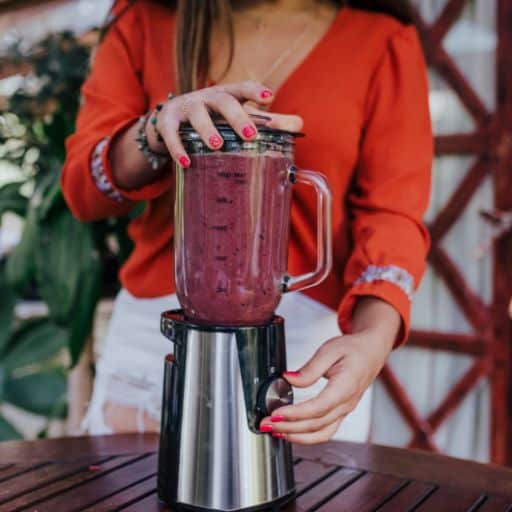
Ingredients
- 2 medium-sized beets, peeled and chopped
- 1 medium-sized apple, chopped
- 1/2 cup parsley leaves
- 1/2 inch ginger, peeled and chopped
- 1/2 lemon, peeled and chopped
Directions
- Wash and chop the beets, apple, ginger, and parsley leaves.
- Add all the ingredients to a blender.
- Blend on high speed for 1-2 minutes or until everything is well combined, and the juice is smooth. If you’d like, add a small amount of water to help the blending process.
- To drink with the fiber, pour the juice into a glass and enjoy. For a thin, smooth juice, strain the juice pulp through a cheesecloth or fine strainer.
You can also experiment with other variations, such as adding carrots, celery, or pineapple. Enjoy the health benefits of this delicious and nutritious juice!
Carrot, Apple, Beetroot and Ginger Juice Recipe

Here is a delicious homemade beetroot juice recipe with carrot, apple, and ginger that you can make using a juicer. This recipe is delicious and packed with nutrients that are great for your body. Beetroot is rich in antioxidants and vitamins, while carrots are a good vitamin A and potassium source. Apples add natural sweetness to the juice, and ginger is excellent for digestion and reducing inflammation. Enjoy experimenting with different variations of this recipe and find the perfect combination that suits your taste buds.
Ingredients:
- 1 medium-sized beetroot, chopped into small pieces
- 2 medium-sized carrots, chopped into small pieces
- 1 large apple, cored and chopped into small pieces
- 1 inch piece of fresh ginger, peeled and chopped
Directions:
- Begin by washing all the ingredients thoroughly under running water.
- Use a sharp knife to chop the beetroot, carrots, and apple into small pieces.
- Peel and chop the ginger into small pieces.
- Add the ingredients to the juicer slowly. Alternate between each ingredient to help keep the juicer working efficiently.
- Pour the juice into a glass and enjoy this refreshing drink!
Store any leftover juice in an airtight bottle in the fridge for up to two days. You can also freeze the juice for up to three months.
Frequently Asked Questions
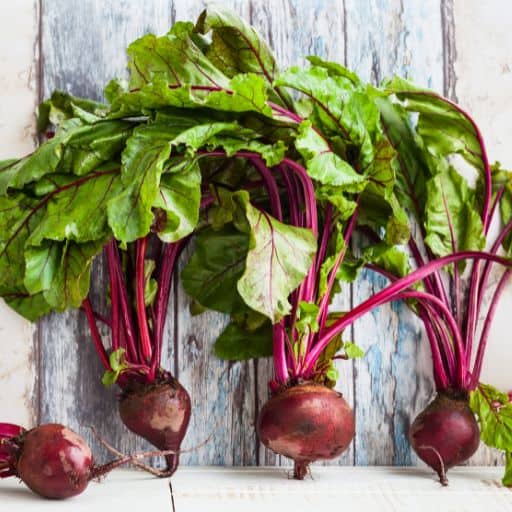
Do you need to peel beets for juicing?
No, you can juice the beets with the skin on after scrubbing and rinsing them properly.
Can you drink homemade beet juice every day?
Yes, in small quantities, such as 8oz of fresh raw beet juice. It is advisable to consult a medical professional before introducing new food into your diet, particularly if you take medications.
Can you juice the leaves of beets?
Yes, you can juice beet leaves and stems. You can also add them to salads, saute them or make chips out of the leaves, similar to kale chips.
What can you do with leftover beetroot pulp?
A: You can use the pulp in smoothies and baked goods like cakes and muffins or dehydrate it to make your own beet powder.
Enjoy Your Fresh Beetroot Juice
The next time you think about making a juice drink from scratch, think about beetroots! This simple root vegetable is loaded with antioxidants, vitamins, and minerals and has been shown to fight inflammation and boost immunity.
As you can see, it is easy to make beet juice at home using either a juicer or a blender. Remember to hold onto the pulp and use it for extra nutrients and fiber in other cooking.
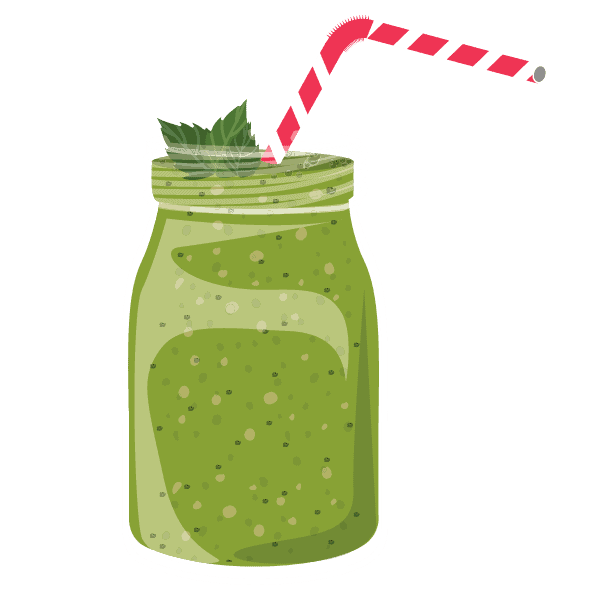
Get access to the latest juicing recipes, product reviews, and upcoming brand promotions delivered straight to your inbox! 🍍

